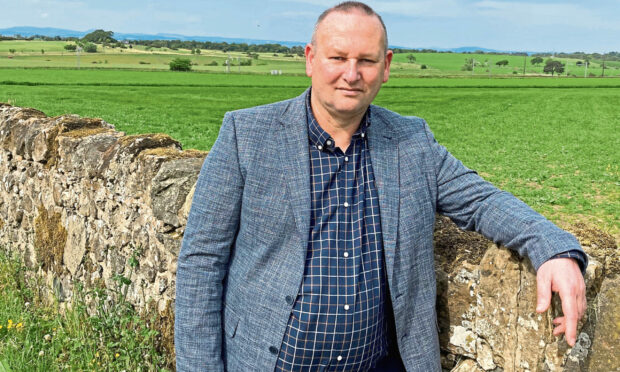Scotland’s super-early grain harvest could bring potentially damaging aphids more into play this autumn as farmers inevitably take the opportunity of planting their winter crops earlier than usual, while it remains relatively warm.
In most years, aphid flights stop when temperatures drop below about 11C, a temperature threshold which isn’t normally a planting consideration in Scotland.
This year, however, some farmers could be ready to start planting winter barley crops two or three weeks sooner than normal, due to the exceptionally early conclusion of the 2022 harvest.
“As a country, we’re getting warmer and one of the downsides of having a warmer climate is that aphids could be around earlier than in the past and could stay around longer,” said Adrian James, AHDB’s knowledge exchange manager for cereals in Scotland.
“In addition, this has been an incredibly dry year and an incredibly warm harvest.
“While it isn’t finished yet, we’re certainly in the final throes of harvest which, for this early in September, is unheard of in Scotland.
“As a result, some farmers will also be drilling earlier, potentially, and that fact alone means they might be drilling while aphids are still flying.
Aphids may result in significant yield loss
“In a normal year, of course, we might not be drilling until the end of the month, or into October, when there would be less risk. This is clearly something that farmers need to be aware of as they adjust to the current season.”
The big risk for crops sown early is that late surviving aphids could still be around to transmit barley/cereal yellow dwarf viruses (BYDV), a condition which can cause significant yield loss, subject to the level of aphid activity, BYDV presence and strain, the growth stage at which infection occurs, and other environmental conditions.
In the case of severe infections, however, BYDV has been known to cause losses of 60% in winter wheat and 50% in barley.
Asked if farmers in Scotland should therefore consider holding off winter planting until they get into their normal cultivation slot, Mr James replied: “If you were down south you might factor that in but with our weather being different in Scotland, I think that if it’s drillable you go in as soon as possible.
“Just spend a bit more time monitoring your crop, in the knowledge there might be more aphids around.”
As for the longer term, he suggested that farmers in Scotland might also need to take a bit more notice of potentially selecting varieties with a higher BYDV resistance rating than has been the case in the past.

Conversation